January 13, 2013
January 12, 2013
A resolution approved Wednesday by the U.N. Security Council by a vote of 12-2 with one abstention imposes a fourth round of sanctions against Iran over its suspect nuclear program. Here are the key points in the 18-page text:
NUCLEAR ISSUES:
— Reiterates demand that Iran suspend enrichment and comply with all requirements of the International Atomic Energy Agency including its additional protocol which allows unannounced inspections of nuclear facilities.
— Calls on Iran to ratify the Comprehensive Nuclear Test Ban Treaty “at an early date.”
— Bans Iran from any foreign investment in uranium mining, enrichment or reprocessing, production or use of nuclear materials and technology, heavy-water activities, and technology related to ballistic missiles capable of delivering nuclear weapons.
MISSILES AND ARMS PROLIFERATION:
— Bans countries from selling eight categories of heavy weapons to Iran: battle tanks, armored combat vehicles, large caliber artillery systems, combat aircraft, attack helicopters, warships, missiles and missile systems.
— Bans all countries from supplying technical training, financing or other services for these weapons.
— Bans Iran from any activity related to ballistic missiles capable of delivering nuclear weapons, including launching such a missile.
— Bans all countries from supplying technology or technical assistance to Iran for such activities.
INDIVIDUAL AND COMPANY SANCTIONS:
— Adds one individual and 40 companies and other organizations to a list of those subject to an asset freeze including 22 entities involved in nuclear or ballistic missile activities, 15 controlled or acting on behalf of Iran’s powerful Revolutionary Guard Corps, and three linked to the Islamic Republic of Iran Shipping Lines.
— Orders all countries to ban the 41 individuals now on the list from traveling to or through their territory.
ILLEGAL SHIPMENTS:
— Calls on countries to cooperate in inspections — which must receive the consent of the ship’s flag state — if the vessel is suspected of carrying prohibited cargo.
— Bans the supply of fuel or services to Iranian owned or contracted vessels suspected of carrying prohibited cargo.
FINANCIAL AND BANKING MEASURES:
— Calls on countries to block financial transactions, including insurance and reinsurance, if there are “reasonable grounds” to believe these activities could contribute to Iranian nuclear activities.
— Orders all countries to require their nationals and companies operating in their territory “to exercise vigilance when doing business with entities incorporated in Iran or subject to Iran’s jurisdiction.”
— Calls on countries to ban the licensing of Iranian banks, the opening of financial institutions, or the establishment of new joint ventures if they have information that provides “reasonable grounds” to believe these activities could contribute to Iranian nuclear activities.
SANCTIONS ENFORCEMENT:
— Requests Secretary-General Ban Ki-moon to establish a committee of experts to monitor implementation of all sanctions against Iran and calls for a first report 90 days after its appointment.
ENGAGEMENT:
— Stresses the willingness of China, France, Germany, Russia, Britain and the United States “to further enhance diplomatic efforts to promote dialogue and consultations … without preconditions” with Iran.
— Emphasizes the importance of political and diplomatic efforts to find a negotiated solution guaranteeing that Iran’s nuclear program is exclusively for peaceful purposes.
— Notes in this regard the efforts of Turkey and Brazil toward agreement with Iran on a fuel-swap for the Tehran Research Reactor “that could serve as a confidence-building measure.”
— Emphasizes in the context of these efforts “the importance of Iran addressing the core issues related to its nuclear program.”
Posted by: blogtest123 at
04:42 PM
| No Comments
| Add Comment
Post contains 580 words, total size 4 kb.

Twitter to use own Web link shrinker this summer
SAN FRANCISCO — Twitter plans to start using its own Web link shortener on addresses that users include in tweets.
Starting this summer, Twitter will use its new “t.co” domain name to shorten links that users post directly on Twitter.com or through applications such as TweetDeck. That will help the posts stay within the service’s 140-character limit. The company is currently testing its linking technology with some employee accounts.
Users won’t always see their links displayed as “t.co” addresses, though. If you get Twitter updates sent to your phone via text messaging, a link might show up as a “t.co” address. But you might see the full address or the Web page’s title when looking at that same post on Twitter.com.
“Ultimately, we want to display links in a way that removes the obscurity of (a) shortened link and lets you know where a link will take you,” Twitter spokesman Sean Garrett wrote on Twitter’s blog Tuesday.
Garrett said that this method of packaging links is meant to improve user safety and will help Twitter gather data for its “promoted tweets,” which are Twitter posts paid for by advertisers to appear in search results on the site.
He also noted that in March, Twitter started using its own “twt.tl” address to automatically channel links that users sent in messages directed specifically at another user. That was a way for Twitter to spot and cut down on the spread of malware and other unsavory content that links can lead to; Twitter can simply disable a “twt.tl” address if it led to a questionable site.
Twitter used to automatically shrink links on tweets as well — first using TinyURL, later using bit.ly — but the site doesn’t currently do so. So if you want to share a long link with friends, you’d have to go to TinyURL, bit.ly or another service to shorten the link first.
Even after Twitter implements “t.co,” Garrett said that users will still be able to use link shorteners of their choosing. This means you should still be able to take advantage of traffic analysis and other features that come with those services. But those shortened links will be converted into a “t.co” address.
The effect of Twitter’s move on existing link shorteners is likely to be small. After all, they are also commonly used in e-mails, Facebook posts and other settings.
Posted by: blogtest123 at
03:22 AM
| No Comments
| Add Comment
Post contains 418 words, total size 3 kb.
January 11, 2013

The big interface helps productivity... except when it omits a feature.
Known as one of the premier organizational to-do apps on Mac and iPhone, Things sits in iPad limbo. Is it a stand-alone task-management tool with features that fully match the strong ? No. Is it just an extension of Things for Mac, designed to mostly sync data for mobile use? Not really. Things for iPad gives lip service to both audiences without fully serving either. It omits features--crucial to some--that you'd need in a stand-alone tool, and at $20, it's far too pricey to just be a way to bring the desktop data outside. At least the core to-do list functionality shines through; even in this waffling 1.0.1 version, Things for iPad can help boost your productivity.
Loosely related to the methodology, Things is flexible enough to fit most workflows. You'll create to-do entries, projects with multiple steps, and schedule items. Complete a step, and cross it off; it's good organization at its simplest. You can shuffle items between key areas, such as putting some in today's view to focus on just a few at a time. Scheduled items can even hide in an upcoming area and automatically appear on a specific date.

Different list views help corral to-do entries.
If you have the Mac version of the software, Things for iPad syncs the data over, keeping both editions current with your life. It worked well in our tests. With the desktop software open, every time we launched Things for iPad, the two found each other on the local network.
But you can only access several important features on Things for Mac and then sync them over. For example, recurring events--"take out the garbage each Wednesday"--require the Mac software. Ditto that for customized folder headings that essentially group aliases of to-dos.
Things for iPad misses other key interface features. You can't simply drag single (or multiple) items into new areas; you have to tap them and select a new destination. Worse, there's no search functionality, and bizarrely, you can't create lists that aren't Projects, a restriction that will seriously irk users of Things on other platforms. Cultured Code says it will address most (or all) of these in an update, but it's been almost two months since the app was released, and the company was unable to confirm a timeframe for an update that is absolutely essential for rounding out this half-baked, under-featured, and significantly overpriced app. We know this developer can do great things, and we're hoping the 1.1 update of this iPad app will realize its full potential.
Posted by: blogtest123 at
02:02 PM
| No Comments
| Add Comment
Post contains 434 words, total size 3 kb.
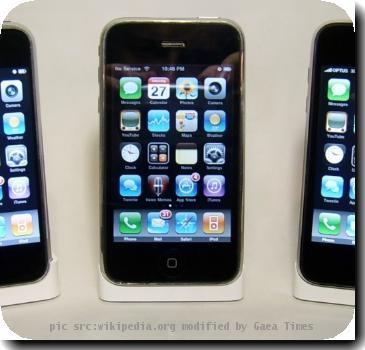
Ahead of the Bell: Apple’s iPhone on T-Mobile?
NEW YORK — The iPhone will be available on other cell phone networks as early as this fall and will likely come first to T-Mobile USA, one analyst who follows Apple Inc. closely said Thursday.
In a note to investors, Kaufman Bros. analyst Shaw Wu said his checks with Apple suppliers and others suggest AT&T Inc. will lose its exclusive place as the iPhone carrier no later than the first half of next year.
One reason T-Mobile is a likely candidate is because the company’s wireless technology is similar to AT&T’s. Sprint and Verizon Wireless use a different wireless standard, so converting the iPhone to run on their networks would presumably involve more technical hurdles.
Wu said T-Mobile also sees the iPhone as key to winning back lost customers, meaning the company will be more likely to settle for Apple’s terms.
“T-Mobile does not comment on rumor or speculation,” T-Mobile USA spokesman Peter Dobrow said Thursday.
“Would we like to offer the iPhone to T-Mobile customers in the U.S.? You bet. Ultimately though it is Apple’s decision on who carries its product,” Dobrow added.
In any case, Wu said, Apple needs to sign up another U.S. carrier to keep up the pace of iPhone sales and counter the rising competition of phones that run on Google Inc.’s Android software.
Neither Apple nor AT&T have said when their exclusive deal is slated to end.
In midday trading, U.S.-listed shares of T-Mobile parent Deutsche Telekom rose 40 cents, or 3.7 percent, to $11.33 amid a broader market rally. AT&T shares were up 44 cents at $25.34, while Apple climbed $3.26 to $246.46.
Posted by: blogtest123 at
12:42 AM
| No Comments
| Add Comment
Post contains 291 words, total size 2 kb.
January 10, 2013
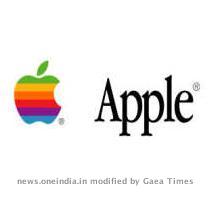
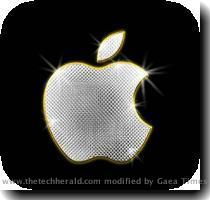
NYC mayor shrugs off iPad e-mail address leak
NEW YORK — Mayor Michael Bloomberg’s e-mail address was exposed because of a security vulnerability with his new iPad, but the billionaire media mogul shrugged it off Thursday and said he didn’t understand the fuss.
“It shouldn’t be pretty hard to figure out my e-mail address,” Bloomberg said, “and if you send me an e-mail and I don’t want to read it, I don’t open it. To me it wasn’t that big of a deal.”
AT&T Inc. said Wednesday that a security weak spot exposed the e-mail addresses — but nothing else — of more than 100,000 iPad users. Only users who signed up for AT&T’s “3G” wireless Internet service were affected.
The problem had to do with the way AT&T’s website prompted iPad users to log onto their AT&T accounts.
A hacker group that calls itself Goatse Security claims to have found the weakness and said it was able to trick AT&T’s site into giving up more than 114,000 e-mail addresses, including those of famous people and government officials.
Bloomberg, who founded the financial information company Bloomberg LP and has an estimated $18 billion fortune, said such glitches are part of modern life.
“We live in a world where information is available all over the place, and there’s going to be security breaches every day all over the world,” he said. “That’s what happens when you have information.”
In recent weeks, the mayor has often touted the Apple Inc. tablet as a helpful tool for managing a city of 8.4 million people.
AT&T said Wednesday it would notify all iPad users whose e-mail addresses may have been exposed.
“We take customer privacy very seriously and while we have fixed this problem, we apologize to our customers who were impacted,” the company said in a statement.
Posted by: blogtest123 at
11:22 AM
| No Comments
| Add Comment
Post contains 319 words, total size 3 kb.
January 09, 2013
Video game companies get ready to show new ways to get entertained
By Barbara Ortutay, APThursday, June 10, 2010
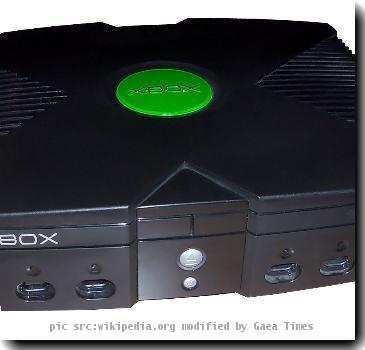
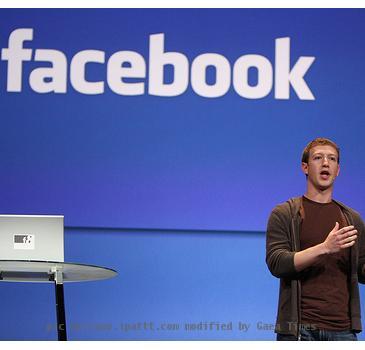
Game companies ready to show new ways to play
NEW YORK — Video game makers are about to try to convince you that fancy 3-D screens, gesture-recognition cameras and ultra-sensitive motion controllers topped with brightly glowing spheres are what you need to have a good time.
They’ll do this as they try to emerge from a slump in the recession, which shocked a business long believed to be protected from, if not totally immune to, the workings of the broader economy.
Much of the industry’s success this year is riding on whether Microsoft, Nintendo, Sony and game publishers are able to sway consumers toward new, maybe even pricey ways to experience games — even as free or inexpensive options on Facebook, smart phones and the iPad compete for their attention.
Beginning next week at E3, as the Electronic Entertainment Expo in Los Angeles is called, game companies will show off several new mechanisms for playing games. Among them will be Move, which is Sony’s new motion controller for the PlayStation 3 and launches this fall, when it is expected to cost less than $100. A black remote with a color-changing ball on top, it builds on the success of the Nintendo Wii’s popular motion-control wand, but it promises more precision. A camera called PlayStation Eye recognizes the glowing orb and uses it to track the remote’s position in a 3-D space, further immersing players in the game.
Even so, Fidel Martinez may need a bit of convincing. The 19-year-old PlayStation 3 owner says he likes his button-filled video game controllers just fine, thank you. Walking out of New York’s Nintendo World store recently after buying a wallet, Martinez said he doesn’t think he’ll buy Move.
“It’s too weird,” said Martinez. “The times I’ve played (motion-controlled) games has been strange. I’d rather use the old kind.”
Sony is betting he’ll change his mind. Richard Marks, senior researcher at the company and the brains behind Move, thinks the controller will appeal to gamers like Martinez, even if they snubbed the Wii’s gesturing wand as kids’ stuff.
“One of our design goals was to make sure it stood out as a completely different experience that has never been seen before,” Marks said.
Serious gamers like Martinez are not the only ones on Sony’s radar. The company has been pouring millions of dollars into marketing the PlayStation 3 with the tag line “It only does everything.” The goal is to rope in consumers more likely to watch movies and play party games than shoot on-screen enemies for hours on end.
“In many regards we are treating the launch of Move like the launch of a new platform,” said Peter Dille, senior vice president of marketing for Sony Computer Entertainment. “We believe (it) will help us expand the audience of PS3 users.”
Microsoft, too, wants to expand its gaming audience — a concept Nintendo mastered with the 2006 launch of the Wii, which got moms, grandmas and grandpas playing alongside kids as young as 4 or 5.
Natal, Microsoft’s upcoming game technology, uses a camera and gesture recognition to turn players’ bodies into controllers. After the camera recognizes you — your body shape and movements down to the smallest toss of your hair, you’ll be able to swing your hands to swipe at on-screen dodge balls or pretend you’re Godzilla and smash virtual buildings with swing of your arm. You could even scan in your real-life skateboard to ride a version of it in a game.
“This is really what we like to think of as the rebirth of our brand,” said Dennis Durkin, chief operating officer of Microsoft’s video game business. “We’re trying to set the stage for the next 10 years.”
To do that, Microsoft needs to keep appealing to its core gamer fans, mostly men in their 20s, 30s and 40s who count “Halo,” ”Call of Duty” and “Gears of War” among their favorite entertainment franchises. But, like Sony with the PlayStation 3, it’s also selling the Xbox 360 to families as an all-in-one entertainment device. It already streams Netflix and connects to Facebook.
E3, which runs from Monday through Thursday, is where many store chains will decide what games and gaming systems, and how many of them, to stock for the holiday shopping season. That period is crucial for the industry, which analysts say gets about 40 percent of its revenue in the final three months of the year.
Analyst firm DFC Intelligence estimates that the worldwide video game retail industry will reap revenue of $59.5 billion this year, down slightly from $60.4 billion in 2009 and well below the more than $68 billion in 2008.
Because the industry has yet to fully rebound from the recession, Jesse Divnich, an analyst with Electronic Entertainment Design and Research, called E3 an “inflection point,” with game companies under pressure to impress.
While hardcore gamers have flocked to shooters and sequels with loyal predictability, newer, more “casual” players can be fickle. Largely responsible for the runaway success of the Wii, the players who dabble in video games as a hobby but not as a lifestyle can’t be expected to spend $60 every time a new game comes out, even in a better economy. That’s why it’s important for game companies to sell a wide range of entertainment options.
“Something that is new, something that is true innovation, something that unlocks new experiences,” said Microsoft’s Durkin, is something families “are willing to pay for.”
He may be right. Walking out of the Nintendo World store with her husband with some gifts for her daughter, stay-at-home mom Terri Marrone said she hadn’t heard of the new motion controllers from Sony or Microsoft. The family has a Wii, and three Nintendo DS systems, one for each of their kids. As for another motion control system, one that doesn’t even need a remote?
“We would definitely be interested,” said Marrone, who lives in New Brunswick, N.J. “It sounds cool.”
Posted by: blogtest123 at
10:02 PM
| No Comments
| Add Comment
Post contains 1025 words, total size 7 kb.
Wednesday, June 9, 2010
 “iPhone 4 is the biggest leap since the original iPhone,” said Apple CEO, Steve Jobs, while unveiling the fourth-genration iPhone at WWDC. Apple’s iPhone has achieved a phenomenal success world-wide, evolving into the most advanced mobile phone in its successive generations. A year ago, Apple launched its iPhone 3GS model featuring a camera with higher resolution and video capability, voice control, and support for 7.2 Mbps HSDPA. The successor iPhone 4, turns the dream of video calling into reality. Apple’s innovative new Retina display and the highest resolution display ever built into a phone, ensures crisp text, images and video. Additionally, iPhone 4 features a 5 megapixel camera with LED flash, HD video recording and a 3-axis gyro and up to 40 percent longer talk time. All this comes in an scintillating all-new design of glass and stainless steel encasing the slimmest smartphone on this planet. The fourth-generation of iPhone comes with world’s most advanced mobile operating system - iOS 4, which includes over 100 new features and 1500 new APIs for developers. Before you bet your money to go for superior iPhone 4, you need to have a look at the top advantages it offers over iPhone 3GS. We draw the top 10 iPhone 4 Vs iPhone 3GS comparision of features.
“iPhone 4 is the biggest leap since the original iPhone,” said Apple CEO, Steve Jobs, while unveiling the fourth-genration iPhone at WWDC. Apple’s iPhone has achieved a phenomenal success world-wide, evolving into the most advanced mobile phone in its successive generations. A year ago, Apple launched its iPhone 3GS model featuring a camera with higher resolution and video capability, voice control, and support for 7.2 Mbps HSDPA. The successor iPhone 4, turns the dream of video calling into reality. Apple’s innovative new Retina display and the highest resolution display ever built into a phone, ensures crisp text, images and video. Additionally, iPhone 4 features a 5 megapixel camera with LED flash, HD video recording and a 3-axis gyro and up to 40 percent longer talk time. All this comes in an scintillating all-new design of glass and stainless steel encasing the slimmest smartphone on this planet. The fourth-generation of iPhone comes with world’s most advanced mobile operating system - iOS 4, which includes over 100 new features and 1500 new APIs for developers. Before you bet your money to go for superior iPhone 4, you need to have a look at the top advantages it offers over iPhone 3GS. We draw the top 10 iPhone 4 Vs iPhone 3GS comparision of features.
1. Display
iPhone 4 retains the size of 3GS with a 3.5 inch diagonal. It’s completely different with 4 times as many pixels with the so-called retina display. Not just that iPhone 4 flaunts a 4 times the pixels of earlier iPhones, you can feel the difference between the glass you touch and the pixels that are removed.
The 3GS offers a 480×320 pixel resolution at 163ppi. While the iPhone 4 receives a significant bump up providing 960 x 640-pixel resolution at 326ppi and an 800:1 contrast ratio. The screen isn’t OLED as with some other smartphones. While the screen isn’t OLED as with some other smartphones. Apple claims its IPS display technology is better.
2. Storage
The iPhone 4 is available at capacities of 16 GB and 32 GB. The iPhone 3GS has regressed with a new 8GB of memory model apart from the 16GB and 32 GB models. This looks a bid to woo the customers on budget looking for the defunct iPhone 3G.
3. Camera
iPhone 4’s camera is a much-hyped issue, especially with the HD video recording facility. But, it won’t match the best camera phones. Still its excels the 3 megapixels iPhone 3GS with 5 megapixels camera and an added LED flash. What’s more, you have a front-facing camera for FaceTime Wi-Fi video calls and more.
4. HD Video recording
With a Flip Mino HD like video quality iPhone 4 is a giant leap in terms of video recording. The 3GS also supported video recording but it was VGA. iPhone 4 received a 720P is a real bump up to a 5 megapixel camera with a nice addition although at this size any further megapixel increases do become a bit silly due to lens size.
5. Wireless and data
iPhone 4 goes a step ahead of 3GS to adds 802.11n along with 802.11b/g and Bluetooth 2.1. The 7.2Mbps HSDPA, 3G and EDGE specs continue to feature in the iPhone 4.
6. Sleek design
As Steve Jobs’ claims, Apple iPhone 4 is the sleekest mobile on earth. Just 9.3mm in thickness, 24% thinner than the iPhone 3GS, the Jony Ive (iPhone 4). iPhone 4 measures 0.37 inch deep whereas iPhone 3GS’s thickness stands at 0.48 inch. Further, iPhone 4 is slightly narrower, 2.31 inches to 2.44 inches. The two models weigh the same 4.8 ounces, still the tweaks to the dimensions make the iPhone 3GS seem more sludgy in comparison to the newest iPhone.
7. 3 axis Gyro
The most advanced feature added to iPhone 4 is the 3-axis gyro that takes motion-sensing in mobiles to a new level. When paired with the accelerometer, iPhone 4 can perform advanced motion sensing such as user acceleration, angular velocity and rotation rate. With the inclusion of gyro, iPhone 4 will offer motion gestures and greater precision to elevate the gaming experience.
8. External buttons and inputs
Overall iPhone 4 inherits the same form factor and buttons, but it adds an extra mic button to offer better call quality through noise cancellation. Evidently there has been no alterations in the button sizes or location, but the volume of button has been separated into up and down.
9. Power and battery
According to Apple CEO iPhone 4 offers a 40% improvements in its battery performance over the 3GS model. With a 7 hours talk time on 3G, iPhone 4 exceeds 5 hours on the 3GS. The standby time nears 300 hours, which is same for the 3GS.
Users can expect an hour more on browsing and 10 hours more audio playback with the video unchanged at 10 hours.
10. iOS 4 and multitasking
One of the greatest advantages with iPhone 4 is the iOS 4 operating system that supports multitasking, details of which you can read in our. The iOS 4 includes over 100 new features and 1500 new APIs for developers. What’s more, iPhone 4 with iOS 4 will ensure that multitasking doesn’t hamper the performance or battery life. Steve Jobs demonstrated that the services such as Pandora and navigation running in background while other apps were running in the foreground.
Those using Apple iPhone 3GS can go for an upgraded to iOS 4 as soon to be available on in iTunes 9.2 for Mac OS X and Windows in a while or June 21st. Alternately users can go for a iPhone 3GS 4.0 jailbreak.
Posted by: blogtest123 at
08:42 AM
| No Comments
| Add Comment
Post contains 956 words, total size 6 kb.
January 08, 2013


AT&T hole exposes iPad users’ e-mail addresses
SAN FRANCISCO — AT&T Inc. on Wednesday acknowledged a security weak spot that exposed the e-mail addresses of apparently more than 100,000 users of Apple Inc.’s iPad, a breach that could make those people vulnerable to precision-targeted hacking attacks.
The vulnerability only affected iPad users who signed up for AT&T’s “3G” wireless Internet service.
It involved an insecure way that AT&T’s website would prompt iPad users when they tried to log into their AT&T accounts through the devices. The site would supply users’ e-mail addresses, to make log-ins easier, based on unique codes contained in the SIM cards inside their iPads. SIM cards are used to tell cell-phone networks which subscriber is trying to use the service.
The hacker group that claims to have discovered the weakness — the group calls itself Goatse Security — said it was able to trick AT&T’s site into coughing up more than 114,000 e-mail addresses, including those apparently of famous media personalities and important government officials.
A representative for the group told The Associated Press late Wednesday that the group contacted AT&T and waited until the vulnerability was fixed before going public with the information. AT&T said the problem was fixed Tuesday but that it was alerted to it by a business customer.
Gawker Media Inc.’s Valleywag website earlier reported on the breach.
AT&T said it will notify all iPad users whose e-mail addresses may have been accessed.
“We take customer privacy very seriously and while we have fixed this problem, we apologize to our customers who were impacted,” the company said in a statement.
AT&T noted that the only information hackers would have been able to steal using this attack were users’ e-mail addresses. But that can be enough to launch a highly effective attack, since the attacker also knows that the person receiving the e-mail is an iPad user and an AT&T customer and would expect to receive e-mail from Apple and AT&T about their accounts. Criminals could use that knowledge to trick them into opening e-mails that plant malicious software on their computers.
An Apple representative deferred requests for comment to AT&T.
Apple has sold more than 2 million iPads since they went on sale two months ago. The iPad comes in two different flavors — one that only connects to the Internet via Wi-Fi, and another that also can connect through AT&T’s “3G” cellular network. The Wi-Fi-only models aren’t affected by the breach. Apple hasn’t specified how many of each model it has sold.
Posted by: blogtest123 at
07:22 PM
| No Comments
| Add Comment
Post contains 434 words, total size 4 kb.



AT&T security hole exposes iPad users’ e-mails
SAN FRANCISCO — AT&T Inc. on Wednesday acknowledged a security weak spot that exposed the e-mail addresses of apparently more than 100,000 users of Apple Inc.’s iPad, a breach that could make those people vulnerable to precision-targeted hacking attacks.
The vulnerability only affected iPad users who signed up for AT&T’s “3G” wireless Internet service.
It involved an insecure way that AT&T’s website would prompt iPad users when they tried to log into their AT&T accounts through the devices. The site would supply users’ e-mail addresses, to make log-ins easier, based on unique codes contained in the SIM cards inside their iPads. SIM cards are used to tell cell-phone networks which subscriber is trying to use the service.
The hacker group that claims to have discovered the weakness — the group calls itself Goatse Security — said it was able to trick AT&T’s site into coughing up more than 114,000 e-mail addresses, including those apparently of famous media personalities and important government officials.
A representative for the group told The Associated Press late Wednesday that the group contacted AT&T and waited until the vulnerability was fixed before going public with the information. AT&T said the problem was fixed Tuesday but that it was alerted to it by a business customer.
Gawker Media Inc.’s Valleywag website earlier reported on the breach.
AT&T said it will notify all iPad users whose e-mail addresses may have been accessed.
“We take customer privacy very seriously and while we have fixed this problem, we apologize to our customers who were impacted,” the company said in a statement.
AT&T noted that the only information hackers would have been able to steal using this attack were users’ e-mail addresses. But that can be enough to launch a highly effective attack, since the attacker also knows that the person receiving the e-mail is an iPad user and an AT&T customer and would expect to receive e-mail from Apple and AT&T about their accounts. Criminals could use that knowledge to trick them into opening e-mails that plant malicious software on their computers.
An Apple representative deferred requests for comment to AT&T.
Apple has sold more than 2 million iPads since they went on sale two months ago. The iPad comes in two different flavors — one that only connects to the Internet via Wi-Fi, and another that also can connect through AT&T’s “3G” cellular network. The Wi-Fi-only models aren’t affected by the breach. Apple hasn’t specified how many of each model it has sold.
Posted by: blogtest123 at
06:02 AM
| No Comments
| Add Comment
Post contains 435 words, total size 4 kb.
January 07, 2013
HELSINKI — Swiss scientist Michael Graetzel won the 2010 Millennium Technology Prize on Wednesday for helping to develop cheap solar cells for renewable energy projects.
The German-born chemist, director of the photonics and interfaces laboratory at Ecole Polytechnique de Lausanne in the Swiss city of the same name — was awarded the euro800,000 ($960,000) prize by the Technology Academy of Finland for his innovation, which led to the development of electricity-generating windows and mobile solar panels.
The Finnish academy said finding ways to replace the Earth’s diminishing fossil fuel supply was one of mankind’s greatest challenges, adding that the sun is “the most obvious energy source.”
“The constraint of solar energy has traditionally been its price. Graetzel cells provide a more affordable way of harnessing solar energy,” said Ainomaija Haarla, president of the academy. “Graetzel’s innovation is likely to have an important role in low-cost, large-scale solutions for renewable energy.”
The academy described the price-performance ratio of Graetzel’s cells as “excellent, adding that they had just made their commercial debut.
“The technology often described as ‘artificial photosynthesis’ … is made of low-cost materials and does not need an elaborate apparatus to manufacture,” the academy said.
Graetzel, 66, won the main prize while runners up — Sir Richard Friend and Stephen Furber, both British — were each awarded euro150,000 ($180,000) for plastic electronics and microprocessors.
Friend, a professor of physics at the University of Cambridge, was cited for inventing organic Light Emitting Diodes, known as LEDs, “a crucial milestone in plastic electronics.”
“Electronic paper, cheap organic solar cells and illuminating wall paper are examples of the revolutionary future products his work has made possible,” the international award committee said.
Furber, a professor of computer engineering at the University of Manchester, is the principal designer of the 32-bit ARM microprocessor that the academy said “has revolutionized mobile electronics.”
“The ingeniously designed processor enabled the development of cheap, powerful, handheld, battery-operated devices. In the past 25 years, nearly 20 billion ARM-based chips have been manufactured,” it added.
Stig Gustavson, chairman of the academy’s board, said that all three inventions “benefit mankind as broadly as possible, both today and in the future.”
It was the fourth time that Finland has awarded the biennial Millennium Technology Prize, launched by the government and Finnish industry in 2004. The prizes are for achievements in energy and the environment, communications and information, new materials and processes as well as for health care and life sciences.
The previous winner, in 2008, was American Professor Robert Langer from MIT for developing bio-materials used in combatting cancer and heart disease.
Other winners include Japanese Professor Shuji Nakamura for inventions in laser technology and LED lighting, and Tim Berners-Lee, the MIT scientist credited with inventing the World Wide Web.
_______
Online:
www.millenniumprize.fi.
Posted by: blogtest123 at
04:42 PM
| No Comments
| Add Comment
Post contains 472 words, total size 4 kb.
UNITED NATIONS — The U.S. and its allies scored a long-sought victory Wednesday by pushing through new U.N. sanctions over Iran’s nuclear program, punishments Tehran dismissed as “annoying flies, like a used tissue.”
The sanctions target Iran’s powerful Revolutionary Guard, ballistic missiles and nuclear-related investments. Oil exports, the lifeblood of Iran’s economy, are not affected because targeting them would have cost the U.S. essential support from Russia and China.
President Barack Obama said the sanctions are the toughest Iran has ever faced. They required several months of difficult negotiations by the five veto-wielding permanent U.N. Security Council members — the U.S., Russia, China, Britain and France — and non-member Germany. This is the fourth round of sanctions aimed at getting Iran into serious discussions on its nuclear ambitions.
“Actions do have consequences, and today the Iranian government will face some of those consequences,” Obama said. He left the door open to diplomacy but said Iran “will find itself more isolated, less prosperous and less secure” unless it meets its obligations under the Nuclear Nonproliferation Treaty.
Iranian President Mahmoud Ahmadinejad, on an official visit in Tajikistan, dismissed the new resolution.
“From right and from left, they adopt sanctions, but for us they are annoying flies, like a used tissue,” he said.
Tehran insists its program is peaceful and aimed at producing nuclear energy. The U.S. and its allies say Iran is trying to produce nuclear weapons; they want Iran to suspend uranium enrichment and start negotiations aimed at ensuring that it uses nuclear technology only for peaceful purposes.
The new resolution bans Iran from pursuing “any activity related to ballistic missiles capable of delivering nuclear weapons,” bars Iranian investment in activities such as uranium mining and prohibits Iran from buying several categories of heavy weapons including attack helicopters and missiles. Iran, however, already has most of what it would need to make a weapon.
Iran’s top nuclear negotiator, Saeed Jalili, warned that “choosing the option of confrontation will bring Iran’s resolute response,” according to Iran’s official news agency. He did not elaborate.
Iran’s U.N. Ambassador Mohammad Khazaee accused the United States, Britain and their allies of abusing the Security Council to attack Iran.
“No amount of pressure and mischief will be able to break our nation’s determination to pursue and defend its legal and inalienable rights,” Khazaee said. “Iran is one of the most powerful and stable countries in the region and never bowed — and will never bow — to the hostile actions and pressures by these few powers and will continue to defend its rights.”
U.S. Ambassador Susan Rice dismissed Khazaee’s statement as “ridiculous … reprehensible, offensive, and inaccurate” and declared that “these sanctions are as tough as they are smart and precise.”
The resolution was approved by a vote of 12-2 with Lebanon abstaining and Brazil and Turkey voting “no.” Turkey and Brazil, both non-permanent council members, brokered a fuel-swap agreement with Iran that they offered as an alternative solution to concerns Tehran may be enriching uranium for nuclear weapons.
Lebanon’s U.N. Ambassador Nawaf Salam said he abstained because the government failed to “reach a final position.” A U.N. diplomat, speaking on condition of anonymity because the government debate was private, said the Cabinet was split, 14-14, on whether to vote no or abstain.
The sanctions put Iran in the unusual position of bashing key allies China and Russia. Both countries voted for the resolution and either could have vetoed it. Ahmadinejad warned Russian leaders last month “to correct themselves, and not let the Iranian nation consider them among its enemies.”
In Moscow, the Itar-Tass news agency reported that Ahmadinejad will not take part in the summit of the Shanghai Cooperation Organization in Uzbekistan beginning Thursday. The group was created in 2001 to address religious extremism and border security in Central Asia, and has grown into a bloc aimed at defying U.S. interests in the region.
Ahmadinejad is scheduled to tour the World Expo in Shanghai this week, but is not expected to hold talks with senior Chinese leaders.
Iran holds more leverage over China, which needs Iran’s oil and gas to feed its growing energy appetite, than it does over Russia, which has long provided important technology to Iran including building the country’s first nuclear reactor. The facility is expected to begin electricity production this summer.
The Security Council imposed limited sanctions in December 2006 and has been ratcheting them up in hopes of pressuring Iran to suspend enrichment and start negotiations on its nuclear program. Iran has repeatedly defied the demand and has stepped up its activities, enriching uranium to 20 percent and announcing plans to build new nuclear facilities.
The new resolution imposes sanctions on 40 Iranian companies and organizations — 15 linked to Iran’s Revolutionary Guard, 22 involved in nuclear or ballistic missile activities and three linked to the Islamic Republic of Iran Shipping Lines. That more than doubles the 35 entities that had been subject to an asset freeze.
The sanctions add one individual to the previous list of 40 Iranians subject to an asset freeze — Javad Rahiqi, who heads the Atomic Energy Organization of Iran’s Esfahan Nuclear Technology Center. All 41 individuals will also now be subject to a travel ban.
Rahiqi declined to comment when contacted by The Associated Press.
The resolution also calls on all countries to cooperate in cargo inspections — which must receive the consent of the ship’s flag state — if there are “reasonable grounds” to believe the cargo could contribute to the Iranian nuclear program.
On the financial side, it calls on — but does not require — countries to block financial transactions, including insurance and reinsurance, and to ban the licensing of Iranian banks if they have information that provides “reasonable grounds” to believe these activities could contribute to Iranian nuclear activities.
U.S. Defense Secretary Robert Gates said Tuesday that new sanctions would pave the way for tougher additional measures by the U.S. and its allies. France’s U.N. Ambassador Gerard Araud said after Wednesday’s vote that European Union foreign ministers will be meeting on Monday and France would like “a tough translation of the resolution,” but it’s up to the 27 countries to decide on additional sanctions.
Israel’s ambassador to the United States, Michael Oren, said the resolution “can serve as a viable platform” for nations to launch sanctions such as restrictions on Iran’s ability to import gasoline. “They have a lot of oil, but not a lot of refined oil or the ability to export oil abroad,” he said.
The U.N. resolution was approved despite an Iranian diplomatic offensive launched in April. Jalili visited Beijing that month in the wake of U.S. reports saying China had dropped its opposition to possible new U.N. measures against Iran.
Iran also approached several non-permanent Security Council members, including Bosnia, Brazil, Turkey and Uganda, in hopes of averting new sanctions. Inviting diplomats from all 15 members of the Security Council to a two-hour dinner in New York in May was seen as Iran’s high-profile attempt to head off additional penalties.
China’s U.N. Ambassador Li Baodong said after the vote that the sanctions were aimed at curbing nonproliferation and would not affect “the normal life of the Iranian people” nor deter normal trade activity, a view echoed by Russia’s U.N. envoy Vitaly Churkin.
The five permanent council members and Germany, in a statement after the vote, reaffirmed their “determination and commitment to seek an early negotiated solution to the Iranian nuclear issue … which would restore international confidence in the peaceful nature of Iran’s nuclear program.” It welcomed and commended “all diplomatic efforts in this regard, especially those recently made by Brazil and Turkey.”
Brazilian President Luiz Inacio Lula da Silva said the new sanctions were “a mistake” implemented “just for spite.” According to the state-run Agencia Brasil news agency, Silva said the resolution’s supporters “threw out an historic opportunity to peacefully negotiate the Iranian nuclear program” — the fuel-swap agreement his country and Turkey had championed.
Under the proposal, Iran would swap some of its enriched uranium for fuel for a research reactor in Tehran. The U.S., Russia and France have said that — unlike the original plan drawn up eight months ago — the proposal would leave Iran with enough material to make a nuclear weapon.
The three countries sent a letter to the International Atomic Energy Agency seeking clarifications from Tehran, and several council ambassadors said they would still like to see the swap go ahead. Lebanon’s Salam called it “a gateway for confidence building measures.”
“We believe that the sanctions resolution is a painful failure of diplomatic efforts,” Salam said. “We refuse to give up. We call on all states … to reinitiate and intensify diplomatic efforts.”
The new sanctions should bring little direct political fallout for Ahmadinejad. The country has been deeply polarized since last June’s disputed presidential election — which the opposition claims was rigged by vote fraud — and Ahmadinejad’s backers are likely to use the sanctions as a rallying cry.
In Venezuela, President Hugo Chavez condemned the measures against Iran, his close ally.
“Why won’t they sanction Israel? You realize the cynicism of the Yankee empire and its allies in the world,” Chavez said in a televised speech Wednesday night. “Israel massacres, kills, doesn’t comply with United Nations resolutions … and the United Nations acts as if nothing had happened.”
Associated Press Writers George Jahn in Vienna, Matthew Lee in Quito, Ecuador, Peter James Spielmann at the United Nations, Beth Fouhy in New York City, Mark Lavie in Jerusalem and Olga Tutubalina in Dushanbe, Tajikistan contributed to this report.
Posted by: blogtest123 at
03:22 AM
| No Comments
| Add Comment
Post contains 1613 words, total size 11 kb.
January 06, 2013


Hewlett-Packard spends $1.6M on 1Q lobbying
WASHINGTON — Hewlett-Packard Co. spent $1.6 million to lobby the U.S. government in the first quarter on a smorgasbord of issues including federal spending on technology, enforcement of immigration laws and health care reform.
The amount was nearly double HP’s $840,000 lobbying tab from the first quarter of 2009. HP spent $710,000 on lobbying in the fourth quarter of 2009.
Kristy Sternhell, formerly a counsel to Senate Majority Leader Harry Reid, was among the people who lobbied on behalf of HP, which is the world’s biggest technology company by revenue.
HP said in its latest lobbying-disclosure form, filed with the House clerk’s office, that it lobbied Congress and various government agencies. Those agencies included the Homeland Security and Labor departments, which HP lobbied on immigration-related issues, including legislation involving the creation of a computer network to verify that workers in the U.S. are legally able to work. Other agencies included the Health and Human Services department and the Federal Reserve System.
HP’s $1.6 million tab ranked among the highest for technology companies in the latest period.
Other big-time Silicon Valley tech firms spent less. Google Inc. spent $1.4 million in the first quarter to lobby the federal government on issues including its decision to stop censoring search results in China, and Oracle Corp. spent $1.1 million, in part on regulatory issues concerning its recent acquisition of Sun Microsystems.
However, Microsoft Corp., consistently one of tech’s biggest lobbying spenders, spent more than HP — $1.7 million on lobbying in the latest period.
Posted by: blogtest123 at
02:02 PM
| No Comments
| Add Comment
Post contains 271 words, total size 2 kb.
• Hello iPad, Goodbye Netbook
• What Does the Mac's Non-Presence at Apple's WWDC Mean?
• Unloved Mac: Apple Disses the Desktop Again During WWDC Keynote
• RIP, Macintosh?
• Safari 5 Off To Apple's Traditional Rough Start
• Apple Adds 'Make The Web Go Away' Button To Safari 5
• Apple Lifted 'Make Web Go Away' Button From Open Source
• Safari Reader: Apple's Weapon of Mass Destruction
• Is Apple's Safari 5 a Publisher Killer?
• First look: Safari 5's Extensions
• What Safari 5 Extensions Mean To Mac Users
• Safari Extensions Site Already
• A First Overview and Roundup of Safari Extensions
• Safari Purged Of Decade-old Browser History Leak
• Style On The Move: Apple MacBook
• Mac mini Enhanced Compute Cloud (Mac mini EC2)
• The Tech Night Owl: The Verdict: Jobs is Rational, Ballmer is Otherwise.......
Tags: | |
Posted by: blogtest123 at
12:42 AM
| No Comments
| Add Comment
Post contains 163 words, total size 1 kb.
January 05, 2013
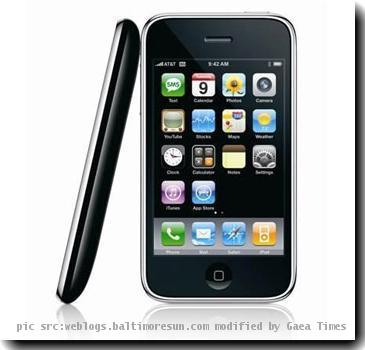
Use iPhone app to identify no-fee ATMs
Want to save money when you travel? Sure, you can look for cheap airfares, budget hotels and discount car rentals. But here’s a simple change that can save you big bucks over the long haul: Stop paying ATM service fees.
After all, why should you pay a few dollars to withdraw money from a machine just because your bank doesn’t have a branch nearby?
Fortunately a handful of apps can help you locate ATMs that won’t charge you fees.
I tried two on my iPhone, and both were free. So it costs you nothing to save some dough on the road or even in your hometown.
The first app I tried is from Allpoint. It’s a network of about 37,000 ATM locations around the world. A few thousand are in the United Kingdom and the rest are in the U.S.
The ATMs are usually in drug stores, retail outlets and the like. The network charges you zero to withdraw money — though your own bank might charge you something for using an out-of-network ATM.
The app is easy to use. You can search from your current location or by address. It shows nearby Allpoint locations on a map or in list form with distance noted. I used it awhile back to find an ATM close to work. It turned out that machine was even closer than the bank I’d used occasionally at $3 a pop.
Allpoint’s app works seamlessly with the iPhone’s map function to give directions to whichever location you choose. The network also offers apps for BlackBerry and Android smart phones.
I also tried CO-OP Network’s app. It bills itself as the largest credit union-only ATM network in the country. For those with credit union accounts, the app serves much the same function as Allpoint.
It has fewer locations than the first app. And it was a bit slower on my iPhone. There were fewer locations as well. The credit union app offers a link to the location’s website and shows it on a map or in list form. But it didn’t offer step-by-step directions like the Allpoint app.
But either one can save some serious money over time. Consider that a $3 surcharge to withdraw $20 is like paying a 15 percent fee to withdraw your money.
Posted by: blogtest123 at
11:22 AM
| No Comments
| Add Comment
Post contains 401 words, total size 3 kb.
January 04, 2013
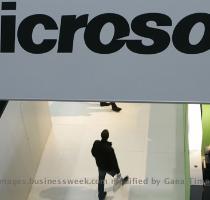
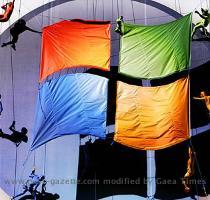
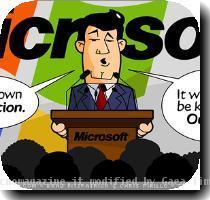
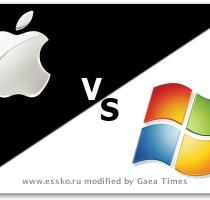
Review: Web Apps are limited free taste of Office
NEW YORK — This week saw the launch of a free version of Microsoft’s flagship Office software, available online. In other news, hell just froze over.
The idea of Microsoft Corp. letting people use its software for free will take some getting used to. But rest assured, it makes sense: The new Office Web Apps are rather stripped-down versions of Word, Excel, PowerPoint and OneNote.
In our test, it’s evident that Microsoft is positioning these free “Web applications,” which run in a browser, as extensions of and supplements to its full Office suite, rather than as standalone replacements in the vein of Google’s Docs, which has been available since 2006.
That said, the free Microsoft programs can still prove valuable for those who don’t want to buy the software. Microsoft is releasing its latest version, Office 2010, to consumers next week. The “Home and Student” package, which consists of the same four applications that are available on the Web, will cost $149 for the full, packaged product, and $119 for a download.
In particular, the Web Apps will be helpful for those who collaborate with people who have the full Office suite. You can open documents they send and modify text, spreadsheets and so forth. But the bulk of the formatting will still need to be done with the desktop application.
The Web Apps can also be a standalone alternative to Google Docs, if your demands are low. You can create, share and print new documents in the browser. Web-created Word documents may satisfy many users, while PowerPoint decks will be very crude.
As is Microsoft’s intent, the Web Apps are most useful to those who also buy the software. You can shuttle your documents back and forth between the desktop and Web versions. For instance, if you have Office on your work computer, you can now make changes from your home computer, even if it’s a Macintosh or a puny netbook.
So how do you access the Web Apps? If you have a Windows Live or Hotmail account, you will notice a link to “Office” at the top of the screen after you log in. Otherwise, sign up for an account. The files will live in a Web-based “SkyDrive” tied to the account.
A word about browsers: If your computer is on the old side, or a low-powered one like a netbook, you’ll want to avoid using the Web Apps with Microsoft’s own Internet Explorer. In my test on a computer that’s seen four or five summers already, typing in the Word Web App using Internet Explorer 8 was painful. The text took too long to appear, and the sentence wavered up and down as if I were hammering on a mechanical typewriter. The app simply overloaded the PC’s processor, and it was unable to keep pace with the typing.
I didn’t have the same problem when using Internet Explorer on a new, faster laptop, nor was it a problem when I used the Firefox browser on the old PC. Google Inc.’s Chrome browser did an even better job of keeping the load on the processor light, though an add-on program that makes it easy to send Web documents to the desktop version of the Office program does not work in Chrome.
Here’s a rundown of the Web Apps, and the differences from the offline versions:
Word — The most fully featured of the apps. You can type, check spelling, set headlines, create tables and insert pictures. You can’t tweak the margins, create columns, or access footnotes or comments, though you can view all these features in a “Reading View” if they’ve been added in the desktop program. Note that unlike the other Web Apps and Google Docs, Word Web App does not automatically save your document as you work — you have to hit the Save button. Google Docs’ word processor is more fully featured, but fancy stuff, including footnotes, doesn’t work well when imported into Word.
Excel — You can enter data and formulas in spreadsheets and have them calculated correctly. You can’t adjust the layout of the sheet or create pie charts or other graphics. Oddly, you can’t move cells or columns around: You have to cut them out, make space for them somewhere else, and then paste them. You can’t open some spreadsheets that have “comments, shapes or other objects.”
PowerPoint — You can edit text and add slides, but you can’t adjust graphic elements. If you have an arrow pointing the wrong way, you can delete it, but you can’t make it point the right way. You can create a presentation with pre-formatted boxes and diagrams, but your options are very limited. The Web App is mostly good for minor edits or last-minute changes.
OneNote — Microsoft’s sleeper Office app, designed to help you collect information and notes in one, easily searchable place. The Web App lets you paste pictures into your notes, but the more useful features of the desktop program, like inserting PDFs and clippings from Web pages, are missing. The app is supposed to be able to send notes to the desktop program and vice versa, but this didn’t work — I got error messages instead. A Microsoft representative said this may be a symptom of the flood of users trying the Apps this week.
Online:
office.live.com
Posted by: blogtest123 at
10:02 PM
| No Comments
| Add Comment
Post contains 906 words, total size 7 kb.

A leak in Apple's supply chain has revealed that the company may be preparing to ship as many as 3 million iPhone 4 devices per month. According to Robert Lai, Asia Optical's chairman, the company is supplying Apple will 3 million front-facing VGA cameras per month. He also states that Apple has booked enough cameras to supply about 9 million iPhone 4's per quarter.
According to a post by , Lai said that Asia Optical has been supply Apple with cameras since manufacturing began in May.
notes that if Apple were to sell 3 million iPhones per month, that would be similar to Google's announced 100,000 activations per day of Android devices.
Needless to say, there should be plenty of iPhones 4's to go around should the demand be high around the world.
Posted by: blogtest123 at
08:42 AM
| No Comments
| Add Comment
Post contains 147 words, total size 1 kb.
January 03, 2013
CHICAGO — They aren’t even out of grade school. But already, people are trying to name the youngest up-and-coming generation, and figure out who they might be and how they might be different from their predecessors.
At a loss for something more original, many call them Generation Z, because they follow Generations X and Y. They’ve also been referred to as Generation Net or “iGen,” since they’ve never known a world without the Internet.
Beyond being the tech savviest of generations, some generational experts think these kids will be different — and perhaps less entitled — because they’re growing up in a recession.
But other experts who study young people say they have their doubts about that.
Posted by: blogtest123 at
07:22 PM
| No Comments
| Add Comment
Post contains 130 words, total size 1 kb.
Thursday, June 10, 2010
BANGALORE - Som Mittal, President of National Association of Software and Service Companies (NASSCOM) has said outsourcing business in India has witnessed more than nine times growth, from 1.6 billion dollars to 14.7 billion dollars in the last decade.
Addressing media persons here on Wednesday, Mittal said: “In this last decade, from 1.6 billion, we rose to 14.7 dollars.”
He further said that India’s back-office outsourcing business would post a growth of 15 to 16 percent in 2010 to March 2011 on growing demands from overseas clients.
There is a growth in the employment sector as well, as far as the BPO industry is concerned.
He pointed out that even two-tier cities have become the hub of IT industry and software development.Today, BPO industry is in 50 cities and towns. I think that’s very significant, so, a large part of the business did come from top six-seven cities, but the fact that they are already in 50 cities, is very significant,” he added.
“Several new upcoming areas such as procurement services, healthcare outsourcing and knowledge services, which include services such as research and analytics, legal services outsourcing, financial research and data management, are expected to aid the growth of the BPO industry in the future,” Mittal said.
NASSCOM is the premier trade body for the IT-BPO industries in India. (ANI)
Posted by: blogtest123 at
06:02 AM
| No Comments
| Add Comment
Post contains 236 words, total size 2 kb.
January 02, 2013
SAN JOSE, Calif. — Revenue at the world’s semiconductor companies will climb 28.4 percent to $290.5 billion this year, an industry trade group projected Thursday.
That growth will taper off to an increase of 6.3 percent in 2011 and 2.9 percent in 2012, the Semiconductor Industry Association said.
Chip sales have been rising steadily for months after the recession sapped demand and forced companies that buy semiconductors to slash their inventories.
SIA reported a 58 percent jump in chip sales for the first quarter of 2010 compared with the year-earlier quarter, and a 50.4 percent rise in April.
The recovery comes after a 9 percent drop in chip revenue last year to $226.3 billion.
“Healthy demand in all major product sectors and in all geographic markets drove sales of semiconductors to record levels in the first four months of 2010,” SIA President George Scalise said in a statement Thursday.
He said SIA’s forecast for the year is based on projected worldwide economic growth of 4.6 percent this year and 4.4 percent in 2011.
Emerging economies such as China and India will help lead the way as demand for information technology in those markets helps boost demand for chips, Scalise said.
Posted by: blogtest123 at
04:42 PM
| No Comments
| Add Comment
Post contains 211 words, total size 1 kb.
32 queries taking 0.062 seconds, 109 records returned.
Powered by Minx 1.1.6c-pink.









